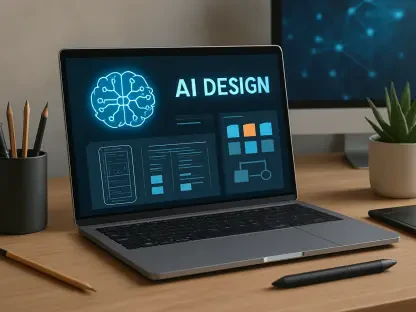The digital advertising landscape is undergoing a seismic shift, with creator-driven content emerging as a powerhouse that often outshines traditional media in engagement and trust. As brands scramble to connect with audiences through authentic voices, a new breed of technology has risen to streamline this process: AI-driven creator marketplaces. These platforms are transforming how brands and content creators collaborate, leveraging artificial intelligence to automate processes, match partners, and ensure campaign success. This review dives deep into the capabilities of such marketplaces, exploring their core features, real-world impact, and the challenges they face in an ever-evolving creator economy.
Understanding AI-Driven Creator Marketplaces
AI-driven creator marketplaces serve as digital intermediaries that connect brands with content creators for sponsored campaigns across social media platforms. By harnessing artificial intelligence, these platforms automate critical aspects of influencer marketing, such as identifying suitable creators, managing campaigns, and analyzing performance. Their emergence aligns with the explosive growth of the creator economy, where authenticity and personal connection drive consumer behavior more than ever before.
The significance of these marketplaces lies in their ability to address longstanding inefficiencies in digital advertising. Traditional methods often struggled with scalability and relevance, but AI introduces data-driven precision and automation, enabling brands to reach niche audiences through creators who resonate with specific demographics. This shift reflects broader trends toward personalized marketing, where trust and engagement take precedence over broad, generic ad placements.
Moreover, these platforms are redefining collaboration by offering scalability that manual processes could never achieve. As ad spend increasingly flows toward creator channels, the demand for efficient, technology-backed solutions continues to surge. This positions AI-driven marketplaces as pivotal tools in modern marketing strategies, fundamentally altering how brands build relationships with both creators and consumers.
Core Features of AI-Powered Platforms
Automated Campaign Management
One of the standout features of AI-driven creator marketplaces is their ability to automate campaign management from start to finish. This includes everything from ad buying to execution, significantly reducing the manual workload for brands. By streamlining these processes, such platforms enable faster campaign rollouts, often cutting timelines from weeks to mere days.
The impact of automation extends to scalability, allowing brands to manage multiple partnerships simultaneously without sacrificing quality. For instance, tasks like budget allocation and performance tracking, which once required dedicated teams, are now handled seamlessly by AI systems. This efficiency not only saves time but also reduces operational costs, making influencer marketing accessible to smaller brands.
Beyond cost and time benefits, automated systems ensure consistency in campaign execution. They minimize human error by standardizing workflows, which is crucial for maintaining brand integrity across diverse creator collaborations. As a result, brands can focus on strategy rather than logistics, confident that the backend operations are optimized for success.
Creator-Brand Matching Algorithms
At the heart of these marketplaces are sophisticated AI algorithms designed to match brands with the most suitable creators. These algorithms analyze vast datasets, including audience demographics, content style, and past performance, to ensure alignment with brand objectives. The precision of such matching enhances campaign relevance, leading to higher engagement rates.
What sets these tools apart is their ability to uncover unconventional yet effective partnerships. For example, a health supplement brand might be paired with outdoor adventure creators rather than strictly fitness influencers, tapping into an overlapping audience with shared interests. This creative approach often yields unexpected success, broadening the scope of influencer marketing.
Additionally, these algorithms adapt over time, learning from each campaign to refine future matches. This dynamic capability ensures that brands consistently connect with creators who can deliver authentic content to the right audience. Such adaptability is key in a landscape where consumer preferences and platform trends shift rapidly.
Content Review and Brand Safety Tools
Ensuring brand safety remains a critical concern in influencer marketing, and AI-driven marketplaces address this through advanced content review tools. These systems automatically scan creator content for alignment with campaign goals, flagging potential issues like inappropriate language or off-brand messaging before posts go live. This proactive approach safeguards brand reputation in real time.
Historically, brands faced challenges in maintaining quality control over creator content, often relying on manual reviews that were both time-consuming and prone to oversight. AI tools mitigate these risks by providing consistent, objective assessments, allowing for swift corrections if needed. This reliability builds trust between brands and platforms, fostering long-term collaborations.
Furthermore, these features extend beyond mere compliance to enhance content quality. By offering insights into what resonates with audiences, AI helps creators fine-tune their output to meet brand expectations while retaining authenticity. This balance is essential for campaigns that aim to engage without appearing overly commercial or forced.
Recent Developments in Creator Marketplaces
The landscape of AI-driven creator marketplaces is evolving at a breakneck pace, with multi-platform support emerging as a defining trend. As creators and brands operate across various social networks, platforms are expanding beyond single-channel focus to integrate with diverse ecosystems like short-form video formats and partnership ads. This adaptability ensures campaigns can reach audiences wherever they are most active.
Another notable shift is the increasing ad spend allocated to creator-driven content, reflecting a broader industry pivot toward authentic engagement. Video formats, particularly short, dynamic clips, have seen a surge in popularity, prompting AI systems to optimize for these mediums with tailored analytics and recommendations. This focus on trending formats keeps marketplaces relevant in a competitive digital space.
AI technology itself continues to advance, with innovations in predictive analytics and real-time performance tracking becoming standard. These developments allow for more agile campaign adjustments, ensuring brands can respond to audience feedback instantly. Staying ahead of such technological curves is crucial for platforms aiming to lead in this dynamic market.
Real-World Applications and Impact
Across industries, AI-driven creator marketplaces are proving their worth with tangible results. Brands in sectors ranging from fashion to technology have reported significant improvements in return on ad spend, often surpassing traditional digital channels. For instance, a footwear company achieved over five times better returns through a marketplace compared to standard video ad platforms, alongside a high rate of new customer acquisition.
Creators, too, benefit immensely, with many seeing their earnings from brand partnerships double within months of joining such platforms. The speed at which creators receive campaign offers has also improved dramatically, shrinking from weeks to under a day in some cases. This efficiency empowers creators to focus on content rather than outreach, boosting their productivity and income.
Unique applications further highlight the versatility of these marketplaces. Some platforms have facilitated campaigns that blend niche interests with broad appeal, such as pairing eco-friendly brands with travel vloggers to promote sustainable products. These creative strategies demonstrate how AI can uncover opportunities that traditional marketing might overlook, driving innovation in campaign design.
Challenges and Limitations
Despite their promise, AI-driven creator marketplaces face several hurdles in scaling their impact. Technical challenges persist in refining AI tools to handle the nuances of human creativity and cultural context, which can sometimes lead to mismatched partnerships or content missteps. Continuous improvement of algorithms is necessary to address these gaps.
Privacy concerns also loom large, as data-driven matching relies on extensive user information that must be handled with care. Striking a balance between personalization and data protection is critical, especially as regulations in digital advertising become stricter. Platforms must prioritize transparency to maintain trust among brands, creators, and audiences alike.
Market competition adds another layer of complexity, with numerous players entering the space and vying for dominance. Differentiation through unique features or superior performance metrics becomes essential for survival. Ongoing efforts to innovate, comply with legal standards, and build robust user communities are vital for overcoming these competitive pressures.
Future Prospects of AI-Driven Marketplaces
Looking ahead, the trajectory of AI-driven creator marketplaces points toward even greater integration and sophistication. Advances in AI technology could enable deeper personalization, predicting not just who to match but how audiences will respond to specific content styles. Such capabilities would further elevate campaign effectiveness over the coming years.
Broader platform integrations are also on the horizon, with plans to support additional social networks between 2025 and 2027. This multi-channel approach will likely become a standard, allowing brands to orchestrate cohesive campaigns across diverse creator ecosystems. The potential for seamless cross-platform strategies could redefine digital advertising norms.
Long-term, these marketplaces are poised to prioritize authenticity and engagement over traditional ad formats, shaping a future where creators are the cornerstone of marketing. Their influence on the creator economy could drive systemic changes, from how ad budgets are allocated to how consumer trust is cultivated. This evolution promises a more connected and genuine advertising landscape.
Final Thoughts and Next Steps
Reflecting on the journey of AI-driven creator marketplaces, their transformative impact on digital advertising stands out as a game-changer in past years. These platforms redefined efficiency and authenticity in brand-creator collaborations, delivering measurable results that often surpassed conventional methods. Yet, challenges like technical refinement and privacy concerns remain persistent hurdles that demand attention.
Moving forward, stakeholders should focus on fostering innovation while addressing ethical considerations around data use. Investing in transparent practices and user education could mitigate privacy fears, ensuring sustained trust. Additionally, brands and creators alike might benefit from exploring hybrid campaign models that blend AI insights with human intuition for even greater impact.
As the technology continues to mature, collaboration between platforms, regulators, and industry players will be key to unlocking its full potential. Embracing adaptive strategies and prioritizing user-centric design could pave the way for a future where creator marketplaces not only thrive but also set new benchmarks for meaningful digital engagement.









